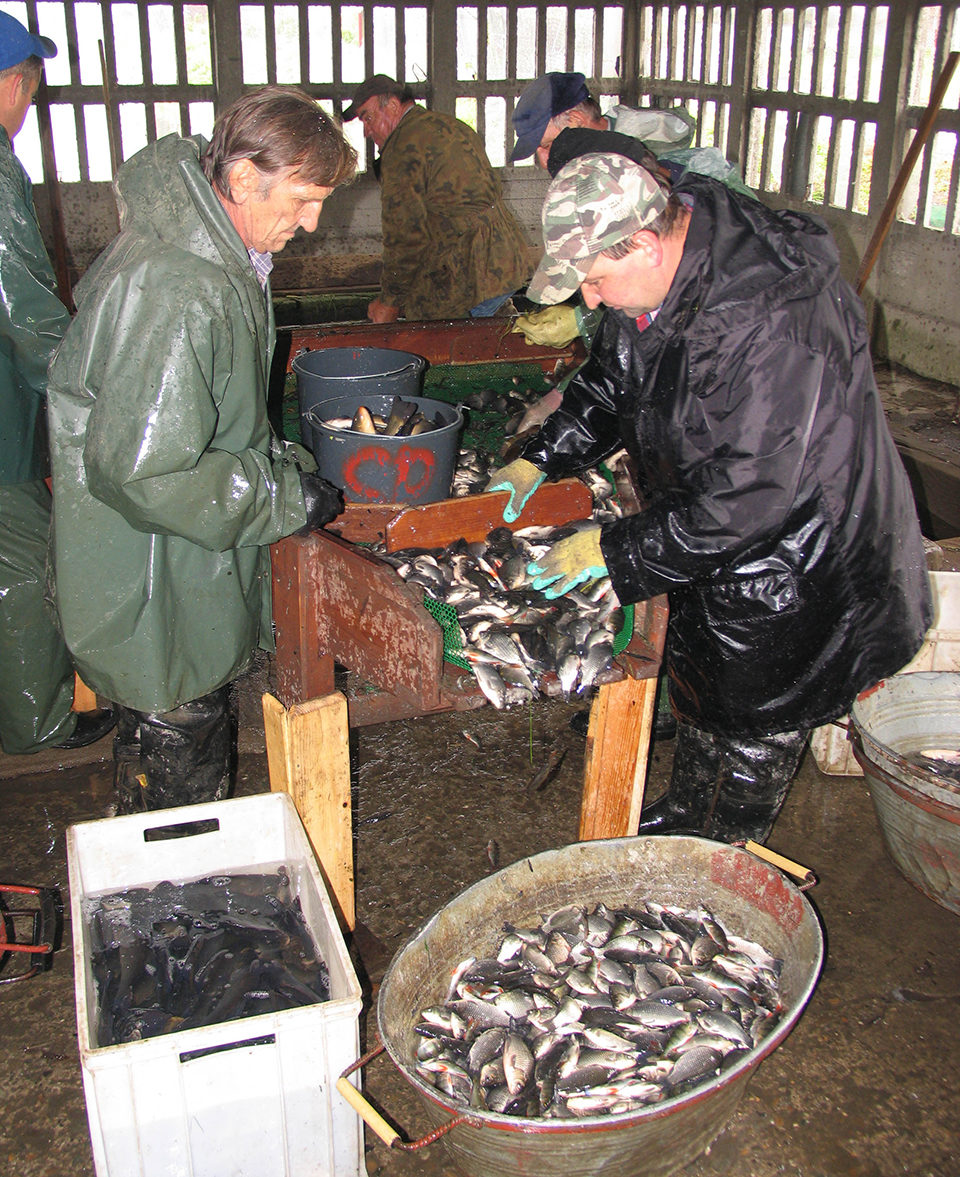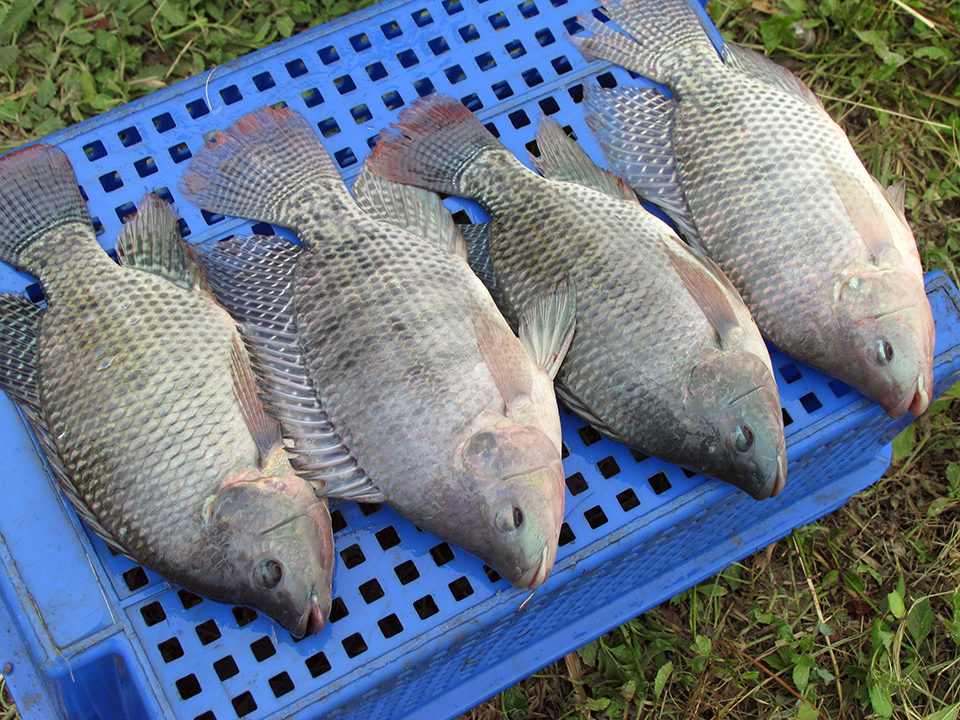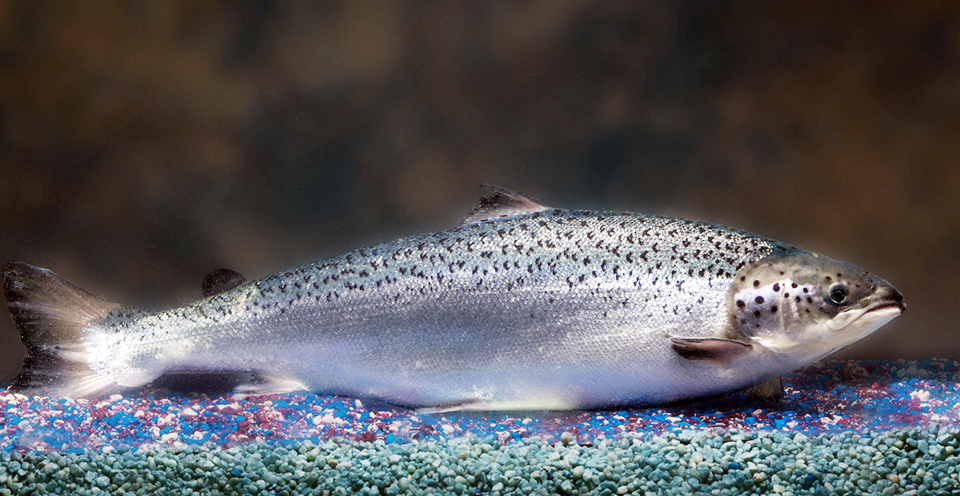Status, adoption vary by sector

To achieve profit, commercial aquaculturists strive to increase production efficiency through two general approaches. The approach taken in most aquaculture research and development activities is to improve the agrotechnical system – culture vessels, nutrition, management regime, etc. The other is to improve the culture stock, an approach that receives relatively little sustained investment.
This shortfall is unfortunate, as improving the cultured stock can yield dramatic results. Perhaps the best example is provided by broiler chickens. Most (85 to 90 percent) of the increase in body weight from 1957 to 1991 was attributable to genetic improvement, and age at market size has decreased by about one day per year of breeding. Similarly, milk yield in dairy cattle increased from 2,000 kg per lactation in 1960 to 6,800 kg in 1990. The cost:benefit ratio for selective breeding ranges from 1:5 to 1:50, depending on the species.
For aquatic species, researchers have tools for genetic improvement that are not available to breeders of terrestrial livestock. In addition to selective breeding, they can apply chromosome set manipulation and monosex stock production. The potential for applying gene transfer and genetic marker-assisted selection also is relatively great.
Genetically improved aquaculture stocks
To what degree, though, has genetic improvement been applied to stocks used in commercial finfish production? The use of genetically improved stock varies widely among key sectors.
Salmon
Most production of Atlantic salmon is by vertically integrated producers or contractors to such corporations. Noteworthy breeding programs include a Norwegian government-private sector collaboration and the proprietary programs of vertically integrated producers. In response to a court order requiring production of only North American stock in the United States, the U.S. Department of Agriculture National Coldwater Marine Aquaculture Center recently started a public-sector selective-breeding program. Virtually all producers of Atlantic salmon use genetically improved stock.
Rainbow Trout
The rainbow trout sector is diverse, with most production by vertically integrated producers. There also are specialized seedstock producers and many relatively small growout operations. The USDA National Center for Cool and Coldwater Aquaculture is engaged in selective breeding and marker-assisted breeding. Major public and private rainbow trout-breeding programs are ongoing in Norway and France.
Most rainbow trout producers buy selectively bred lines of known strains. All-female stocks are popular, comprising well over half of rainbow trout production in the United States, and all-female triploid stocks are commercially available. Virtually all rainbow trout producers use genetically improved stock.

Tilapia
While the tilapia sector has a few vertically integrated operations, it is dominated by small-scale producers. The most notable tilapia-breeding effort is development of the genetically improved farmed tilapia (GIFT) strain by the WorldFish Center. Genetically male tilapia have been developed by FishGen in Wales.
Many relatively small operations practice in-house selective breeding, and some sell seedstock to growout operations. Production of sex-reversed tilapia is widespread. However, use of genetically improved tilapia stock varies widely within and among regions.
Channel Catfish
The channel catfish sector has a mix of vertically integrated producers and small-scale farms, with about 15 fingerling producers. Notable breeding programs have been realized by Auburn University, the USDA Catfish Genetics Research Unit and GoldKist/Harvest Select.
About half of catfish fingerling producers use mass selection for growth and early spawning. Some 25 percent of catfish production stems from the Auburn, USDA103 or GoldKist lines, while about 30 percent uses mass-selected lines from fingerling producers. The remainder are unimproved. Recently, there is growing interest in producing the channel x blue hybrid catfish.
Other Species
For many globally important species – such as Chinese carps and Indian major carps – there is little utilization of genetically improved stocks. For many traditional aquaculture operations, production relies on capturing wild broodstock or fry.
Considering the sizes of the respective sectors, this situation applies to the majority of finfish production globally. The real need for developing genetically improved carp stocks is beginning to be addressed by a breeding program modeled on the GIFT tilapia program.
Advancing genetics
How can aquaculturists make the best use of genetically improved stocks? The answer varies among sectors. If genetically improved stocks are available, first systematically compare their performance in replicated systems, statistically comparing survival, growth and yield. Select the stock that performs best in your system.
If improved stocks are not available, the question becomes one of how to promote the development and use of genetically improved lines. The key to success is to build appropriate partnerships among the commercial sector, government agencies, universities and non-governmental organizations, including foundations. Consider two case studies of success.
Breeding success
Norwegian Atlantic salmon breeding was initiated in 1971 by the Institute for Aquaculture Research, Norwegian Fish Farmers Association and Fish Farmers Sales Organization. Forty geographic strains were evaluated for a variety of traits related to aquaculture. Selection has targeted different traits over 10 generations, improving growth rate 10 percent/generation and late maturity 11 percent/generation. Selection also has improved flesh color, fat content and deposition, and disease resistance. After the collaborative program achieved considerable success, AquaGen A.S. was established as a limited company in 1992, and SalmoBreed A.S. was established by the industry in 2000.
The GIFT tilapia line was developed through collaboration among technical partners – the International Center for Living Aquatic Resources Management (ICLARM, now WorldFish Center), the Institute for Aquaculture Research and a number of Philippine research agencies. Their efforts were supported by funding from the Asian Development Bank, United Nations Development Program and ICLARM. National research partners assisted in Bangladesh, China, Philippines, Thailand and Vietnam.
The GIFT strain was derived from crossbreeding eight geographic strains of Nile tilapia, followed by index selection for rapid growth in both high- and low-input systems. After five generations of selection, GIFT tilapia exhibited growth rates 85 percent above those of the original stock and generally have performed as well or better than existing lines under production conditions. GIFT tilapia have been distributed worldwide and contributed to the diets of the poor in dozens of countries.
Perspectives
These case studies show that a successful program has to be long-term, address commercial objectives, have an effective dissemination plan and have long-term fiscal support. The challenge before us as a profession is to develop a wider range of genetically improved stocks and to promote their use, especially in lagging sectors.
(Editor’s Note: This article was originally published in the July/August 2010 print edition of the Global Aquaculture Advocate.)
Now that you've reached the end of the article ...
… please consider supporting GSA’s mission to advance responsible seafood practices through education, advocacy and third-party assurances. The Advocate aims to document the evolution of responsible seafood practices and share the expansive knowledge of our vast network of contributors.
By becoming a Global Seafood Alliance member, you’re ensuring that all of the pre-competitive work we do through member benefits, resources and events can continue. Individual membership costs just $50 a year.
Not a GSA member? Join us.
Author
-
Eric Hallerman, Ph.D.
Department of Fisheries and Wildlife Sciences
Virginia Polytechnic Institute and State University
100 Cheatham Hall
Blacksburg, Virginia 24061 USA[117,100,101,46,116,118,64,109,114,101,108,108,97,104,101]
Tagged With
Related Posts

Intelligence
A brief look at genetically modified salmon
If approved by FDA, fast-growing genetically modified salmon will provide a safe and nutritious product similar to other farmed Atlantic salmon.

Health & Welfare
10 paths to low productivity and profitability with tilapia in sub-Saharan Africa
Tilapia culture in sub-Saharan Africa suffers from low productivity and profitability. A comprehensive management approach is needed to address the root causes.

Health & Welfare
A holistic management approach to EMS
Early Mortality Syndrome has devastated farmed shrimp in Asia and Latin America. With better understanding of the pathogen and the development and improvement of novel strategies, shrimp farmers are now able to better manage the disease.

Aquafeeds
A look at protease enzymes in crustacean nutrition
Food digestion involves digestive enzymes to break down polymeric macromolecules and facilitate nutrient absorption. Enzyme supplementation in aquafeeds is a major alternative to improve feed quality and nutrient digestibility, gut health, compensate digestive enzymes when needed, and may also improve immune responses.


